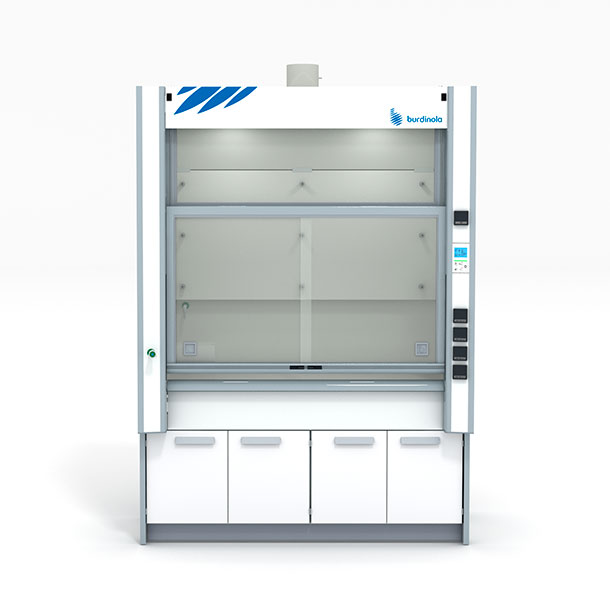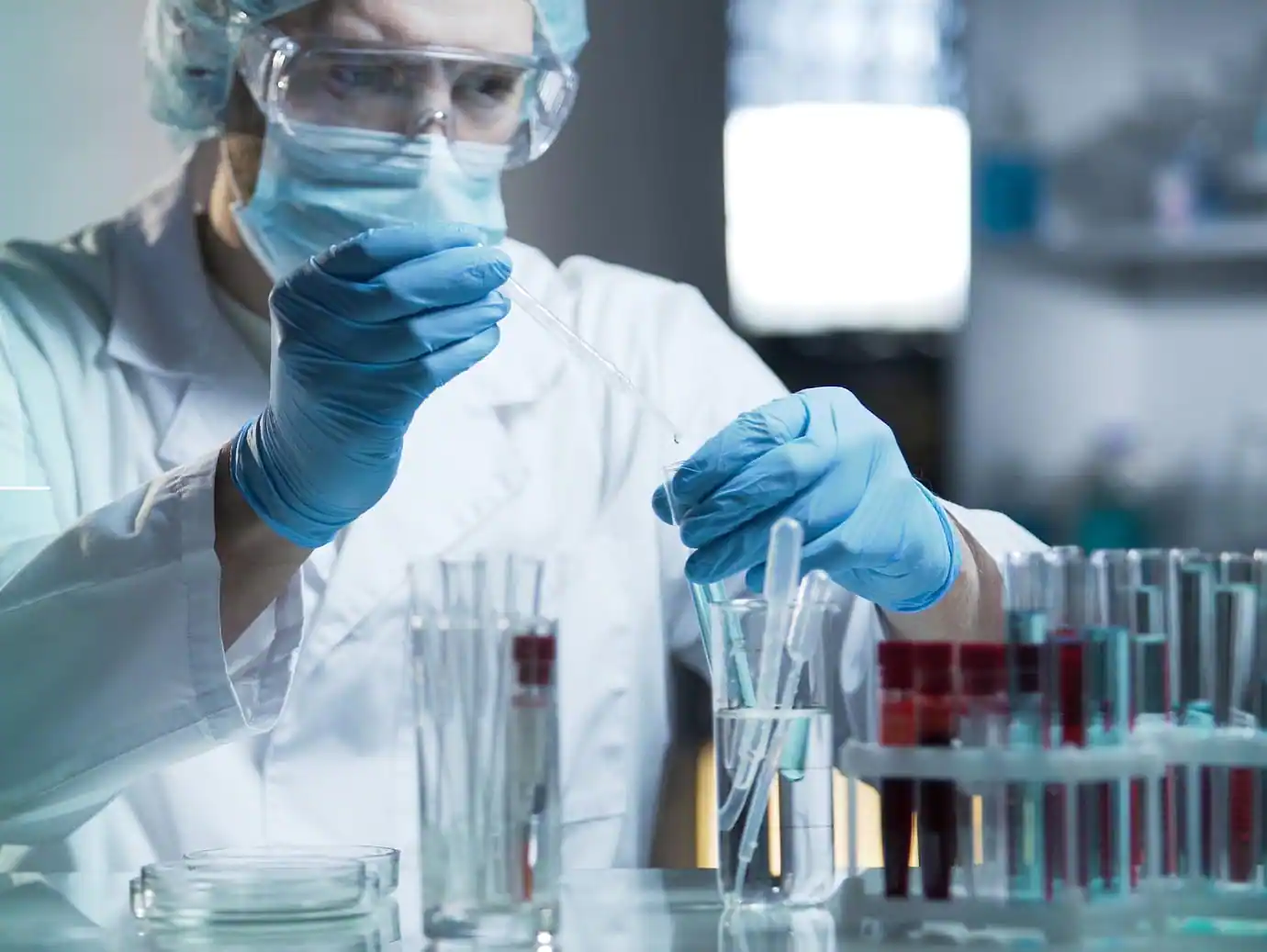Almost all labs are in danger. To protect the safety of employees during the working process, safety equipment for laboratory should be properly chosen. To avoid any accidents, scientists must employ the proper equipment, follow the proper protocols, and exercise extreme caution.
Protecting yourself is protecting everyone, so all people accessing the laboratory should wear their own safety equipment and be aware of the laboratory’s regulations. In this blog, guardboots will develop content about the importance of safety equipment and a list of safety equipment for laboratory. Let’s start with your knowledge!
Why do we need safety equipment for laboratory?
Laboratories are rife with safety risks, from chemicals to electrical equipment. Understanding the significance of laboratory safety is crucial for this reason. You have to make the lab safe before you can work in it. The probability of tragic mishaps increases if you don’t supply safety equipment for laboratory.
Even if you’re not using it yourself, it’s still necessary to become familiar with the equipment at your workplace when working in a lab. It’s also crucial to be aware of what your coworkers, classmates, and other researchers are doing and using in your immediate vicinity.
You can help reduce or eliminate hazards by becoming familiar with the laboratory you are working in and by constantly adhering to the necessary safety protocols. Although laboratories are made with safety in mind, accidents can still occur, therefore it is best to be prepared for the worst.
List of safety equipment for laboratory
1. Safety Goggles
One of your body’s most delicate organs, your eyes are frequently in direct contact with what you’re doing. Therefore, it is crucial to protect them whether working with chemicals, fumes, particles, or any other potentially harmful liquid. With a reliable barrier between your eyes and the outside world provided by goggles, you may work on your project in comfort.
Make sure you select the appropriate design of goggles for your lab while making your choice. Some safety glasses or goggles are made to protect against physical impact, while others are made to shield against chemical splashes. Goggles should ideally fit securely around the eyes, allow movement without rubbing against the skin, and be comfortable to wear without causing any issues.

2. Lab Coats
When working in a lab or a clinical setting, lab coats are required. They aid in preventing spills and unintentional touch from damaging one’s skin and clothing. They also aid in limiting the spread of contamination beyond the facility. In the event of spills or splashes from dangerous substances, they serve as a mobile barrier.
Lab coats are important safety equipment for laboratory. Typically, they are white, knee-length jackets with long sleeves made of cotton, polyester, or another naturally absorbent material. The pinnacle of laboratory attire, lab coats also serve as an important safety measure by assisting in preventing liquids or other hazardous chemicals or particles from coming into contact with skin or clothing.
3. Disposable Masks
The air in the laboratory is filled with toxic gases, flammable liquids, and dangerous gases. The mask completes the user’s facial barrier of protection and aids in preventing large drops or splashes from getting in their mouth or nose.
A good example are surgical masks. Although they are not respirators, keep that in mind. They do not shield the wearer from breathing in airborne chemicals, fumes, or tiny particles. To shield the majority of your face and make it simpler for you to breathe, put on a surgical mask or, even better, a N95 respirator. Depending on the substance, protection quality varies.

4. Disposable Gloves
Referring to safety equipment for laboratory, it is impossible not to mention disposable gloves. They are absolutely essential when you are dealing with hazardous chemicals. They help prevent the spread of bacteria or whatever chemicals you’re working with. After using your hands, wash them and throw them away to be sure that anything possibly hazardous is gone. Gloves that are disposable are as advertised.
A pair should be snug and long enough to avoid rubbing against the hands and wrists. Most essential, gloves ought to be suitable for the job. Make sure to get the correct size for you when choosing disposable gloves because they come in sizes ranging from XS to XL. They come in a wide range of materials as well; if you have a latex allergy, there are latex-free versions made of nitrile and other materials.
5. First Aid Kits
Possibly the most crucial piece of health and safety gear for any setting. Everything required to address minor accidents should be included in a first aid kit.
First aid supplies should be strategically positioned throughout the lab by lab management so that they are quick to use in an emergency. Make certain that each lab technician is aware of the location of these first aid supplies.
We advise weekly monitoring the expiration date and stock level of each item in your first aid kit due to the lab’s high level of danger. You should also replace any things that have been used or that are past their expiration date.

6. Fire Extinguisher and blankets
In every environment, there need to be a fire extinguisher, according to safety experts. Extinguishers come in a variety of types, and laboratories will need a variety of types to put out various forms of fire. The types of laboratory risks must be addressed by the extinguishers you have in place, which is of utmost importance.
A unique material is used to make each kind of fire extinguisher, and it can only put out that kind of fire. You risk failing to extinguish the fire or making it worse if you don’t use the right kind of extinguisher.
Fire blankets are an equally crucial piece of safety equipment for laboratory as fire extinguishers are. It’s crucial to have a lot of fire blankets on available in case of a fire. Wool fire blankets have had a liquid flame retardant treatment. They are used to extinguish fires or to encircle someone whose clothing is on fire.
7. Fume Cupboard
An essential safety equipment for laboratory when you work with hazardous gases is to have a Fume Cupboard. It is an enclosed industrial workbench with an exhaust system that is intended to reduce worker exposure to poisonous or dangerous vapors, fumes, or dust.
Three of its sides are enclosed, leaving the fourth side accessible for use by laboratory staff. A fan in the fume hood produces positive airflow that draws pollutants into the filtration system. Fume hoods come in two varieties: ducted and ductless. The method utilized to evacuate polluted air is where fume hood designs diverge most.

Conclusion
Businesses, governments, and academic institutions can undertake testing and research in laboratories. A laboratory can become a dangerous workplace due to fire risks, dangerous chemicals, and high-risk activities. But when doing your research, serious injuries can be prevented by adhering to laboratory safety regulations and having the appropriate safety equipment on available.
Above is a list of safety equipment for laboratory, we know you know what is essential for your safety and health. Therefore, please follow the regulations, wear safety equipment and have the knowledge/skills to protect yourself when any incident occurs in the laboratory.
Learn more: What are the Types of Safety Equipment?

